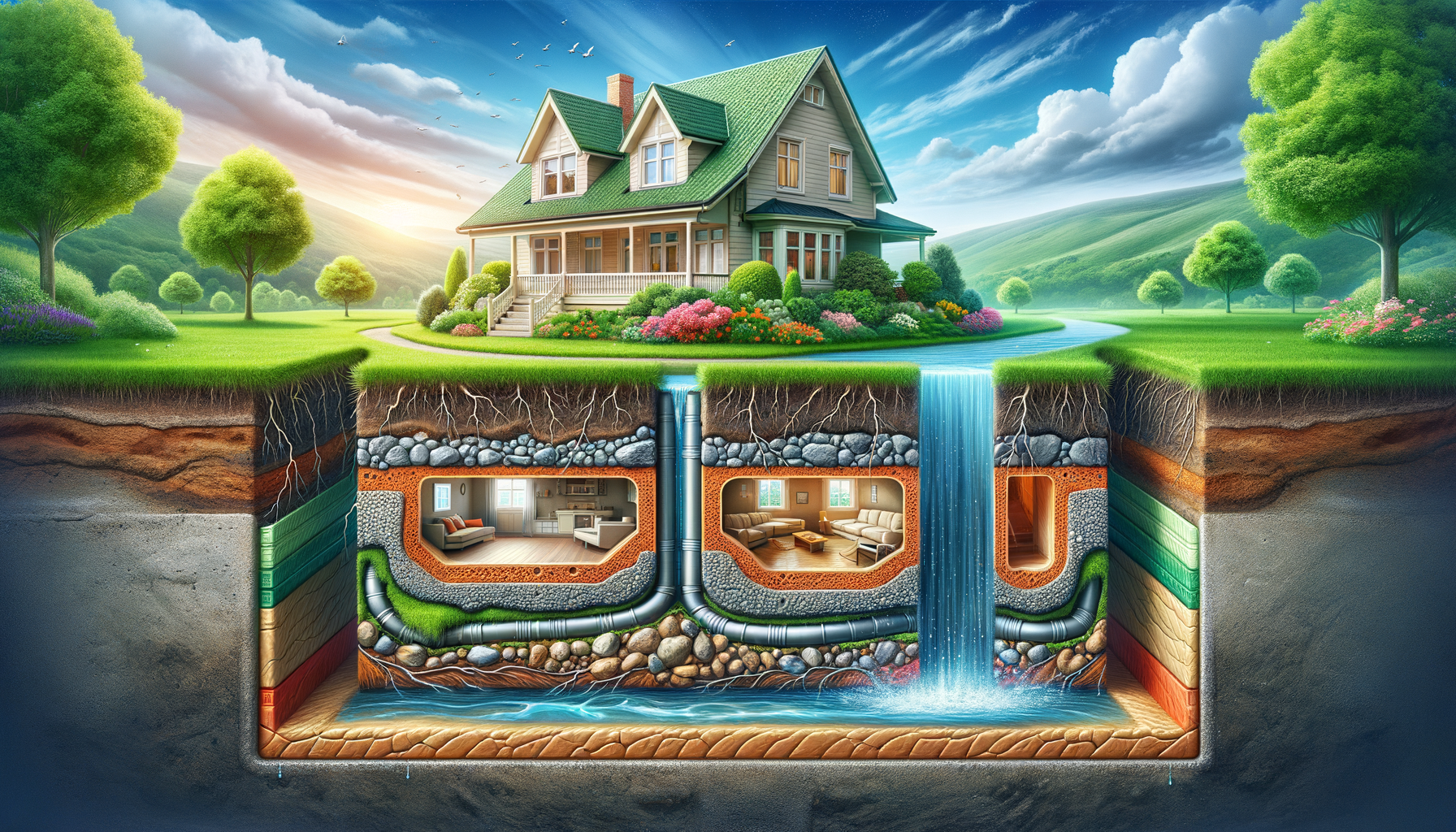What’s Wrong with Your Foundation?
The foundation is the base of your house. Knowing about problems that can happen helps you keep your home safe and sturdy. Let’s look at some common foundation problems and why they occur.
Common Foundation Problems
-
Cracks in Walls and Floors
- These cracks can be tiny or big. They can make your home look bad and weaken its structure.
-
Bowing or Buckling Walls
- If walls bend in or out, it might be because of too much soil pressure.
-
Uneven Floors
- Floors that are not level might mean the foundation is settling or shifting.
-
Sticking Doors and Windows
- Doors and windows that don’t open or close right could be a sign of foundation movement.
-
Water Damage and Mold Growth
- Too much moisture can cause mold and damage to your home.
Why These Problems Happen
-
Soil Movement and Erosion
- Soil can expand, contract, or erode, putting stress on the foundation.
-
Poor Drainage
- Water that stays around the foundation can weaken it over time.
-
Tree Root Infiltration
- Tree roots can grow under foundations, causing them to shift and crack.
-
Inadequate Construction Techniques
- Poor building practices can lead to weak foundations.
-
Water Leaks
- Leaky pipes or poor waterproofing can add moisture to the foundation, making problems worse.
What High and Dry Foundation Repair Means
High and Dry Foundation Repair is about controlling moisture, keeping the structure stable, and preventing future problems. It involves:
-
Moisture Control
- Removing extra water is important for a healthy foundation.
-
Structural Stability
- Strengthening the foundation to prevent more damage.
-
Preventive Measures
- Taking steps to stop future problems before they start.
Benefits of High and Dry Foundation Repair
-
Stronger Home
- A good foundation makes the whole house more secure.
-
Preventing Future Damage
- Fixing issues now stops bigger problems later.
-
Better Indoor Air Quality
- Reducing moisture and mold makes the air inside better to breathe.
-
Higher Property Value
- A strong foundation increases the house’s worth.
-
Peace of Mind
- Knowing your home’s foundation is solid gives better safety and comfort.
How to Keep Your Foundation Strong
Effective Strategies
Here are some tips to keep your foundation in great shape:
Proper Drainage System
- Install gutters and downspouts: These help direct rainwater away from the house.
- Ensure downspouts extend away from the foundation: Make sure they send water several feet away.
- Create proper grading around the house: Make sure the soil slopes away to stop water from pooling.
Waterproofing Solutions
- Exterior waterproofing membranes: Put these on the outside to block water.
- Interior sealants and coatings: Use sealants inside to stop moisture.
- French drains and sump pumps: Install systems to collect and divert water away.
Soil and Landscaping Management
- Avoid planting trees too close: Roots can harm the foundation.
- Maintain soil moisture levels: Keep consistent moisture levels to stop the soil from shrinking or expanding.
- Use mulch and landscaping fabric: These help control surface water.
Watch Out for Signs of Trouble
Indicators of Foundation Issues
Look out for these signs of foundation problems:
-
Visible Cracks and Gaps
- New or growing cracks in walls, floors, or ceilings.
-
Doors and Windows Misalignment
- Frames shifting because of foundation movement.
-
Puddles or Moist Areas in Basement
- Pooling water is a big warning.
-
Unusual Sounds from the Foundation
- Noises like creaking or popping could mean shifting.
-
Persistent Musty Odors
- Often mean mold or mildew from moisture.
Choosing the Right Help
Questions to Ask a Foundation Repair Contractor
When picking a repair contractor, ask these questions:
-
Experience and Credentials
- How long have they been in business? Experience counts.
- Do they have proper licensing and insurance? Ensure they are qualified and protected.
-
Repair Techniques
- What methods do they use? Know their approach.
- Are their solutions long-term? Look for lasting repairs.
-
Customer Reviews and References
- Can they provide references? Personal referrals are helpful.
- What do online reviews say? Look for good feedback.
Cost Considerations
Think about these cost factors:
-
Upfront Cost vs. Long-term Savings
- Quality repairs now can save money later.
-
Financing Options
- Many companies offer financing to manage costs.
-
Warranties and Guarantees
- Ensure the work has a warranty to protect your investment.
Simple DIY Tips for Homeowners
Easy Actions to Take
You can do these simple things to maintain your foundation:
-
Regularly Inspect Your Foundation
- Look for cracks, gaps, and signs of water leaks.
-
Maintain Gutters and Downspouts
- Keep them clear of debris for proper water flow.
-
Manage Soil Moisture Around Your Home
- Use soaker hoses during dry spells.
-
Seal Cracks Promptly
- Use proper sealants for any cracks.
-
Ensure Proper Ventilation in Basements and Crawl Spaces
- Good ventilation reduces moisture buildup.
Wrap-Up Tips
Key Takeaways
Keeping your foundation high and dry is key to a stable home. Regular upkeep and swift repairs save money long-term. Sometimes, you’ll need professional help, but homeowners can take simple steps to prevent many problems.
Encourage Reader Engagement
- Share your foundation repair stories in the comments.
- Contact us for more personalized advice.
By focusing on keeping your foundation high and dry, you can make sure your home stays strong and safe. Use the right strategies and get professional help when needed to prevent future issues and enjoy peace of mind.


Leave a Reply